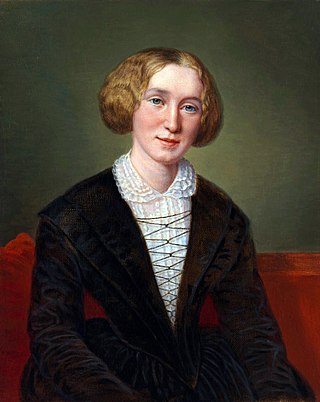
Mary Ann Evans, known by her pen name George Eliot, was an English novelist, poet, journalist, translator, and one of the leading writers of the Victorian era. She wrote seven novels: Adam Bede (1859), The Mill on the Floss (1860), Silas Marner (1861), Romola (1862–1863), Felix Holt, the Radical (1866), Middlemarch (1871–1872) and Daniel Deronda (1876). As with Charles Dickens and Thomas Hardy, she emerged from provincial England; most of her works are set there. Her works are known for their realism, psychological insight, sense of place and detailed depiction of the countryside. Middlemarch was described by the novelist Virginia Woolf as "one of the few English novels written for grown-up people" and by Martin Amis and Julian Barnes as the greatest novel in the English language.

John Henry Newman was an English theologian, academic, philosopher, historian, writer, and poet, first as an Anglican priest and later as a Catholic priest and cardinal, who was an important and controversial figure in the religious history of England in the 19th century. He was known nationally by the mid-1830s, and was canonised as a saint in the Catholic Church in 2019.

Thomas Carlyle was a Scottish essayist, historian, and philosopher from the Scottish Lowlands. A leading writer of the Victorian era, he exerted a profound influence on 19th-century art, literature, and philosophy.

Middlemarch, A Study of Provincial Life is a novel by English author George Eliot, the pen name of Mary Ann Evans. It appeared in eight installments (volumes) in 1871 and 1872. Set in Middlemarch, a fictional English Midlands town, in 1829 to 1832, it follows distinct, intersecting stories with many characters. Issues include the status of women, the nature of marriage, idealism, self-interest, religion, hypocrisy, political reform, and education. Despite comic elements, Middlemarch uses realism to encompass historical events: the 1832 Reform Act, early railways, and the accession of King William IV. It looks at medicine of the time and reactionary views in a settled community facing unwelcome change. Eliot began writing the two pieces that formed the novel in 1869–1870 and completed it in 1871. Initial reviews were mixed, but it is now seen widely as her best work and one of the great English novels.
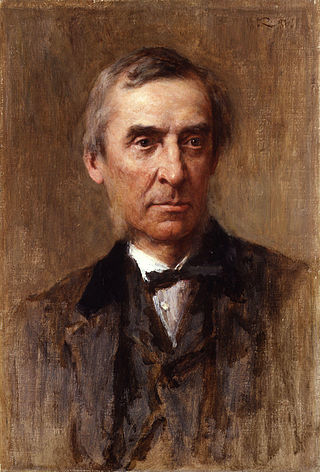
James Anthony Froude was an English historian, novelist, biographer, and editor of Fraser's Magazine. From his upbringing amidst the Anglo-Catholic Oxford Movement, Froude intended to become a clergyman, but doubts about the doctrines of the Anglican church, published in his scandalous 1849 novel The Nemesis of Faith, drove him to abandon his religious career. Froude turned to writing history, becoming one of the best-known historians of his time for his History of England from the Fall of Wolsey to the Defeat of the Spanish Armada.
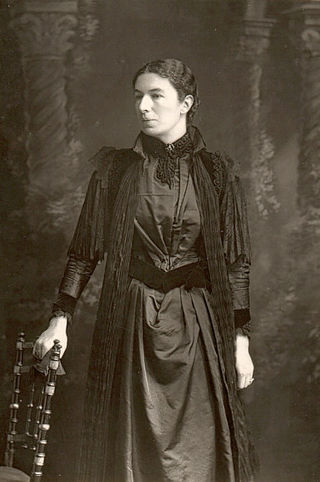
Mary Augusta Ward was a British novelist who wrote under her married name as Mrs Humphry Ward. She worked to improve education for the poor setting up a Settlement in London and in 1908 she became the founding President of the Women's National Anti-Suffrage League.
This article contains information about the literary events and publications of 1849.
Whether I shall turn out to be the hero of my own life, or whether that station will be held by anybody else, these pages must show.
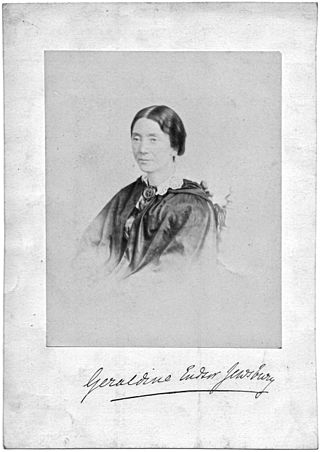
Geraldine Endsor Jewsbury was an English novelist, book reviewer and literary figure in London, best known for popular novels such as Zoe: the History of Two Lives and reviews for the literary periodical the Athenaeum. Jewsbury never married, but enjoyed intimate friendships, notably with Jane Carlyle, wife of the essayist Thomas Carlyle. Jewsbury's romantic feelings for her and the complexity of their relations appear in Jewsbury's writings. She tried unsuccessfully to encourage her close friend Walter Mantell to start a new life as an author after his disagreement with the New Zealand government over Maori land rights.

Francis William Newman was an English classical scholar and moral philosopher, prolific miscellaneous writer and activist for vegetarianism and other causes.

Sartor Resartus: The Life and Opinions of Herr Teufelsdröckh in Three Books is an 1831 novel by the Scottish essayist, historian and philosopher Thomas Carlyle, first published as a serial in Fraser's Magazine in November 1833 – August 1834. The novel purports to be a commentary on the thought and early life of a German philosopher called Diogenes Teufelsdröckh, author of a tome entitled Clothes: Their Origin and Influence. Teufelsdröckh's Transcendentalist musings are mulled over by a sceptical English Reviewer who also provides fragmentary biographical material on the philosopher. The work is, in part, a parody of Hegel, and of German Idealism more generally.
Richard Hurrell Froude was an Anglican priest and an early leader of the Oxford Movement.
William Henry Sewell, English divine and author, helped to found two public schools along high church Anglican lines. A devout churchman, learned scholar and reforming schoolmaster, he was strongly influenced by the Tractarians.
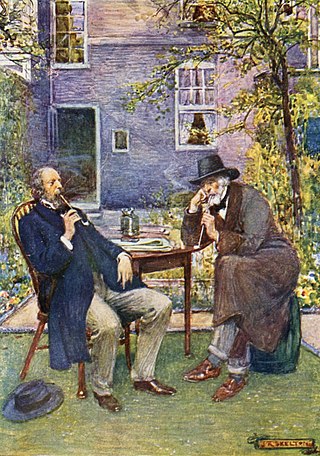
Victorian literature is English literature during the reign of Queen Victoria (1837–1901). The 19th century is considered by some the Golden Age of English Literature, especially for British novels. In the Victorian era, the novel became the leading literary genre in English. English writing from this era reflects the major transformations in most aspects of English life, from scientific, economic, and technological advances to changes in class structures and the role of religion in society. The number of new novels published each year increased from 100 at the start of the period to 1000 by the end of it. Famous novelists from this period include Charles Dickens, William Makepeace Thackeray, the three Brontë sisters, Elizabeth Gaskell, George Eliot, Thomas Hardy, and Rudyard Kipling.

Jane Baillie Carlyle was a Scottish writer and the wife of Thomas Carlyle.

Events from the year 1849 in the United Kingdom.

Loss and Gain is a philosophical novel by John Henry Newman published in 1848. It depicts the culture of Oxford University in the mid-Victorian era and the conversion of a young student to Roman Catholicism. The novel went through nine editions during Newman's lifetime, and thirteen printings. It was the first work Newman published after his conversion to Roman Catholicism in 1845.

Robert Elsmere is a novel by Mrs. Humphry Ward published in 1888. It was immediately successful, quickly selling over a million copies and gaining the admiration of Henry James.

English literature is literature written in the English language from the English-speaking world. The English language has developed over more than 1,400 years. The earliest forms of English, a set of Anglo-Frisian dialects brought to Great Britain by Anglo-Saxon invaders in the fifth century, are called Old English. Beowulf is the most famous work in Old English. Despite being set in Scandinavia, it has achieved national epic status in England. However, following the Norman conquest of England in 1066, the written form of the Anglo-Saxon language became less common. Under the influence of the new aristocracy, French became the standard language of courts, parliament, and polite society. The English spoken after the Normans came is known as Middle English. This form of English lasted until the 1470s, when the Chancery Standard, a London-based form of English, became widespread. Geoffrey Chaucer (1343–1400), author of The Canterbury Tales, was a significant figure developing the legitimacy of vernacular Middle English at a time when the dominant literary languages in England were still French and Latin. The invention of the printing press by Johannes Gutenberg in 1439 also helped to standardise the language, as did the King James Bible (1611), and the Great Vowel Shift.

Johann Wolfgang von Goethe was a German polymath and writer, who is widely regarded as the greatest and most influential writer in the German language. His work has had a profound and wide-ranging influence on Western literary, political, and philosophical thought from the late 18th century to the present day. A poet, playwright, novelist, scientist, statesman, theatre director, and critic; his works include plays, poetry and aesthetic criticism, as well as treatises on botany, anatomy, and color.

Reminiscences is a book by historian and social critic Thomas Carlyle, posthumously published in 1881, which contains two lengthy memoirs of the author's wife, Jane Welsh Carlyle, and friend Edward Irving, together with shorter essays on his father and some of the literary friends of his youth. The book's emphasis primarily rests on Carlyle's relationship with the subjects. The book was begun in 1832 but mainly written in the year following Jane Carlyle's death, in April 1866. Many of its first readers were shocked by the impression it gave of a harsh, gloomy, censorious personality and of a man racked by remorse over his failings as a husband; it did Carlyle's reputation as the sage and prophet of the Victorian era lasting harm. Nevertheless, it is characterized by great vividness and accuracy of detail, and by a comparatively direct, conversational style, and has been called an autobiographical masterpiece.

















